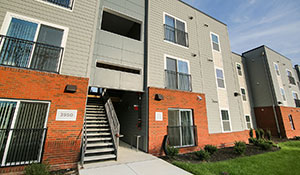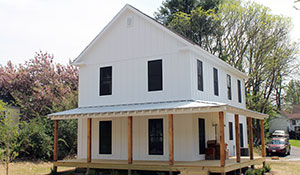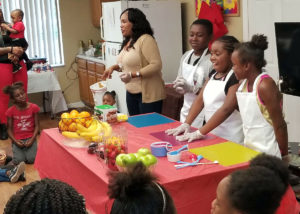January 30, 2018
In a colorful community center in Ocala, Florida, Parkside Gardens property staff prepared fresh fruits and vegetables for that day’s youth and nutrition demonstration. As they finished their tasks and waited for the children to arrive, Diane McElveen, Resident Services Coordinator, offered a bowl of blueberries to one of her volunteers, a reward for a job well done. The volunteer eyed the bowl and then looked up at McElveen.
“I’ve never had a blueberry before,” she admitted.
This may sound surprising, but it’s not uncommon for CHP’s residents who live in so-called “food deserts.” The American Nutrition Association describes food deserts as parts of the country lacking in fresh fruit, vegetables, and other healthful whole foods, usually found in impoverished areas. This is largely due to a lack of grocery stores, farmers’ markets, and healthy food providers. In addition, healthy food often costs more than its processed counterpart, often leaving families to choose between healthy food and other expenses.
Recent studies have shown that as access to fresh produce decreases, childhood obesity and other health issues are increasing. To combat this trend, CHP’s Resident Services applied for and was awarded a $2,500 grant from the United Fresh Start Foundation (UFSF). The grant provided fresh produce and nutritional education to youth on four CHP properties in Central and North Florida: Parkside Gardens Apartments in Ocala, Normandy Apartments in Jacksonville, Woodlawn Terrace Apartments in St. Augustine, and Nature Walk Apartments in Crystal River.
After receiving the UFSF grant, implementation presented its own set of challenges. “A lot of our residents are still preparing the same foods in the same way that their grandparents did,” McElveen said. “So not only are we teaching nutrition in a food desert, but we’re teaching a whole new lifestyle.”
The resident services coordinators came together to develop a special curriculum that they call the “Healthy Rainbow Curriculum,” which teaches children nutritional concepts in a way that is easy and fun. For example, the children learned how to associate a fruit or vegetable’s color to its physiological effects on the body.
Kateria, 11, wrote, “We learned that the red fruit makes your heart healthy and orange fruit helps our immune system. We got to eat lots of delicious fruits and I have a lot of fun at the Discovery Zone.”
The resident services coordinators found that many of the kids took home what they learned, arms full of produce and recipe cards. “Not only were we able to teach children the importance of good nutrition, but we created little ambassadors for good health in our communities,” explained McElveen.
Amarion, 12, added, “I learned how to be strong and healthy! My favorite fruit is now blueberry! I thought blueberries would be nasty but it was amazing.”
In December, children at each of the properties had an opportunity to share what they learned and prepare healthy meals for their families. McElveen is happy to report that the program has been a tremendous success for both the children and their parents, including the volunteer who had never eaten blueberries before.
“We made sure she got a full bag of blueberries at the showcase,” said McElveen.



